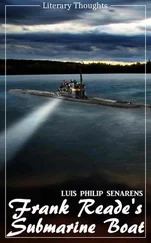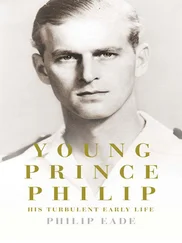Charles had wanted to follow up his victory at Narva by advancing immediately against Pskov and from there into the heart of Russia. He was thwarted, however, by the need to secure his lines of communication against the Poles and Saxons. So he decided to occupy Courland and develop it as a base for his army. Eventually (in 1706) he forced Poland to abandon its alliance with Russia, but meanwhile Peter was able to capture Narva and send forces down the river Neva to snatch the unpromising marshes near its mouth. It was there, in 1703, that he began to build a fort which was to become the nodal point of a new city he called St Petersburg. 3
The decision to develop St Petersburg rather than expand Narva was taken in the light of long experience going back to Ivan IV and with an eye to long-term strategic advantage. The new settlement was less exposed than Narva or any other point along the southern Baltic. Moreover, it gave access to Russia’s river system, so that, with the development of relatively few canals, it could become an organic part of a single communications system. It also gave access to Western merchantmen, and Peter lost no time in selling them the idea of the makeshift settlement (as it remained for several years) as a profitable new trading port in the making.
Once set on his radical strategy to solve Russia’s Baltic problem, Peter would not contemplate abandoning it, even though the great maw of this infant St Petersburg swallowed resources on a gargantuan scale. Indeed, he would happily have surrendered Narva and his other gains around the Gulf of Bothnia, and made other concessions, had Charles only been prepared to cede that small piece of uncertain ground. But Sweden was not content for Russia to have any outlet to the Baltic at all, and so the struggle had to be played out to a violent finish. In terms of resources, Russia had the advantage, though greater difficulties in mobilizing its forces, but Sweden had the better military machine. In 1707 matters moved towards a climax.
The Russian staff expected a Swedish offensive, but not in the direction from which it came — across the Masurian Marshes, to establish a new forward base at Mogilev in Belarus. However, a defeat in Estonia led the Swedes to abandon plans for an amphibious operation against St Petersburg. So far the Russians had suffered more damage than the Swedes in action, but neither side had gained a decisive advantage. Then the weather intervened. Heavy rains turned the roads along the Swedish line of supply into a quagmire, and with the Russians burning crops in the dry areas Charles was soon facing a problem of feeding his army If the Swedish general Lewenhaupt had arrived earlier, according to plan, bringing supplies, all would have been well for the Swedish offensive into west Russia. But Lewenhaupt was delayed too long, and the Russians used the time to fire the villages and crops along what would have been the Swedes’ line of march eastward. In September the thwarted Charles led his army south towards Ukraine. Soon afterwards the news came that Lewenhaupt had been defeated. The die had been cast.
The outcome of the war was turning not on the size and the leadership of armies, but on logistics. The Swedish had the better army, but had to feed it. The Russians understood their enemy’s difficulty, and exploited it to their own advantage. This forced the Swedes to change their strategy. Rather than taking a direct approach against St Petersburg or Moscow, they decided to move south to Ukraine to secure supplies and join forces with Russia’s enemies.
Charles had good reason to hope that the Turks, Tatars, Poles and Ukrainian Cossacks — though subject to the Russian crown — would all join him in the fight against Peter. In the event only Hetman Ivan Mazepa of Ukraine did so, and even he could not bring all his Cossacks over with him. Soon after he had declared for Sweden, a Russian force descended on his base at Baturin, sacking the place and massacring many of its inhabitants. Still, the Swedes had the prospect of wintering in food-rich country with some local support and a less inclement climate. But then the weather intervened again. Winter came early that year, and some Swedish soldiers froze in the saddle that Christmas. The Russians may have sustained many more casualties from exposure to the elements, but they could be replaced. The Swedes could not make good their losses. Spring came, and the Russians destroyed the Zaporozhian Sech, eliminating any chance of a widespread popular movement in support of Mazepa. Then, in June 1709, having for so long avoided a major battle, they offered it. But, true to form, it was Charles who attacked.
The rout of the once all-victorious Swedish army has often been attributed to bad luck — not least by Charles’s chief apologist, his chamberlain Gustavus Adlerfelt. But the Russian strategy of attrition had served to wear the Swedish troops down. True, the co-ordination of the Swedish battle would have been better had not Charles been hors de combat having received a stray bullet in the leg two days earlier. On the other hand the Russian command, having analysed their initial failure at Narva and their other encounters with the Swedes, had set the scene to suit themselves. They had built redoubts to block certain approaches to the enemy and divert them from their main objective, the Russian encampment at Poltava. And this time when the Swedes attacked the shock was absorbed. Charles’s troops were slowed, then stopped, and finally turned. That day Charles lost nearly 10,000 men dead or taken prisoner. Of the prisoners, the rank and file were put to work on useful projects, and several of the officers, educated men, were to find useful employment in the Russian service, in Siberia and elsewhere.
Charles had set out with high hopes and twenty regiments. According to Adlerfelt, ‘Sweden never saw so considerable a force, nor could… [it] have been conducted with more prudence good council and wisdom.’ There was never a braver leader, claimed Adlerfelt, nor more loyal and disciplined troops. Defeat when it came was unbelievable, and Adlerfelt tried to deny it: ‘If the Muscovites had gained so complete a victory as they pretended, why did they not immediately follow the remains of the army?’ 4The answer was that there was no point. What remained of that famous army, 17,000 strong, had had its sting drawn, and most of its troops soon capitulated. Only Charles and Mazepa with their staffs and some close retainers fled into Ottoman territory, where they were accorded political asylum.
The victory at Poltava raised Russia’s profile in the consciousness of Western powers, though even before this England had begun trying to lure Russia into an alliance. It also seems to have marked shifts in Russia’s military policy, both to more open forms of warfare and to preferring Russian over foreign generals in appointments to top commands. Furthermore, since Charles, even in exile, refused to make peace, Sweden had to be forced to come to terms. This required a build-up of Russian naval power in the north, involving the expansion of shipyards at Onega and Ladoga to give them a capacity to build both frigates for deep waters and galleys to negotiate the shallow Baltic. The fruit was Russia’s first significant victory at sea, when, off Hango in 1714, a flotilla of Russian galleys defeated a Swedish force, capturing a frigate and over 100 guns.
This feat was enough to give Peter command of the shallow seas off Finland, and made even the Swedish heartland vulnerable to attack. Since Russian forces had by then occupied Livonia and Estonia — taking Riga, Pernau, Reval, Viborg, Kexholm and most other Swedish holdings on the southern and eastern shorelines of the Baltic — Sweden had virtually no negotiating cards left to play. But Charles was as obstinate as he had been headstrong. He rejected further overtures in 1718, when he was offered the return of Finland, Estonia and Livonia if only he would cede Ingria, Narva and Viborg. He was even offered help to conquer Norway. His death later that year allowed negotiations to proceed, but it was only under pressure of further military operations in the Baltic and Russia’s threat to support the pretensions of the Duke of Holstein to the throne of Sweden that peace was eventually concluded at Nystad in 1721. 5At last the fireworks could be fired over the Neva and Peter could accept a new title.
Читать дальше





![Stephan Orth - Behind Putin's Curtain - Friendships and Misadventures Inside Russia [aka Couchsurfing in Russia]](/books/415210/stephan-orth-behind-putin-s-curtain-friendships-a-thumb.webp)





